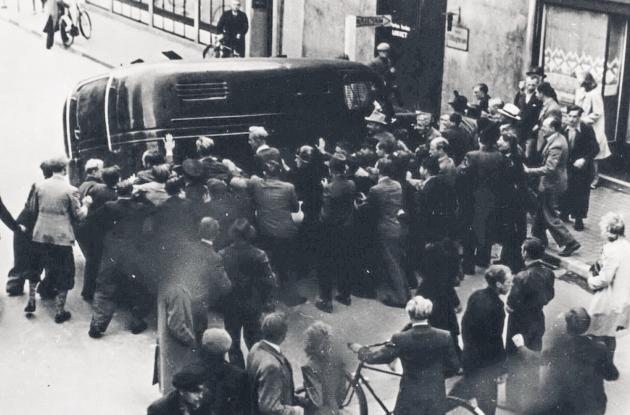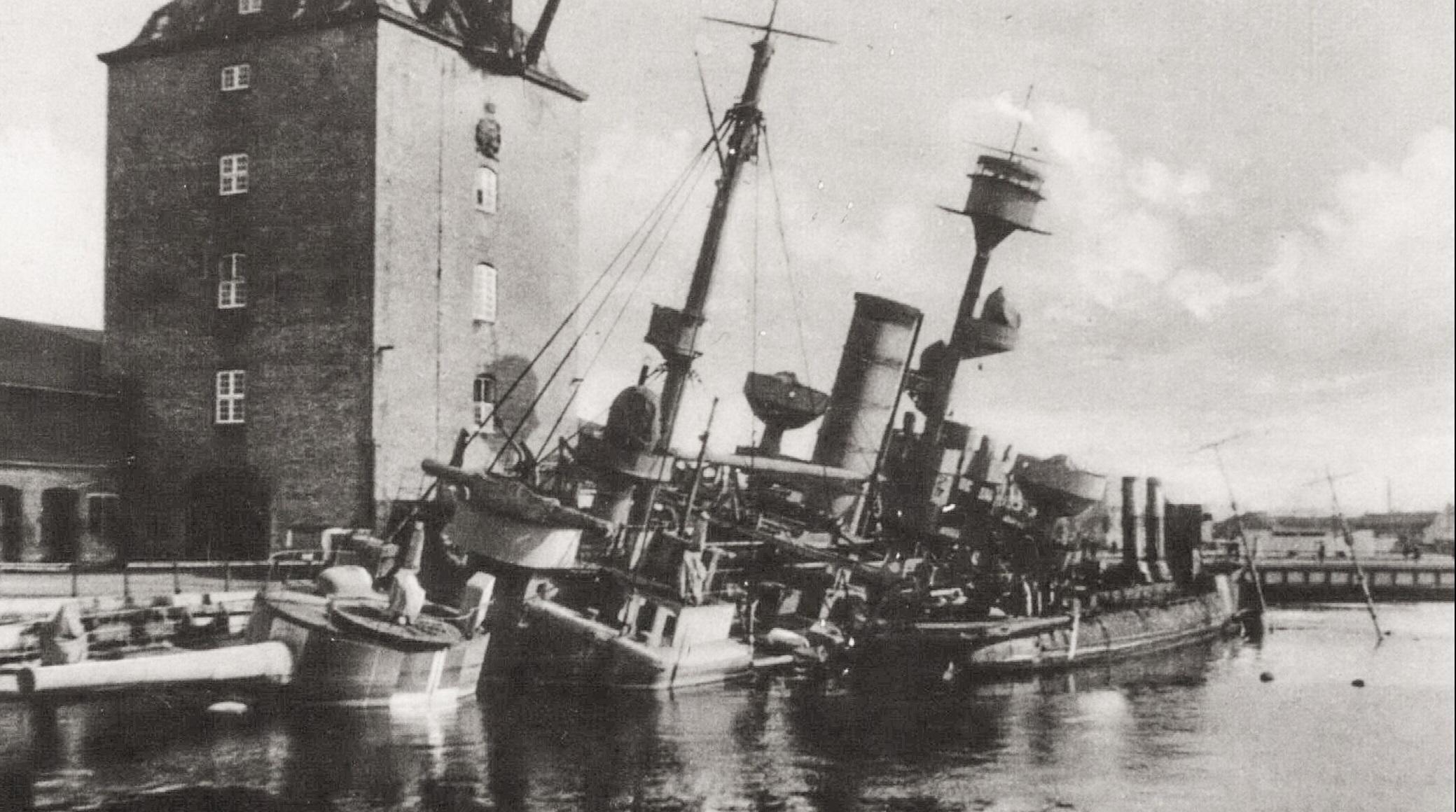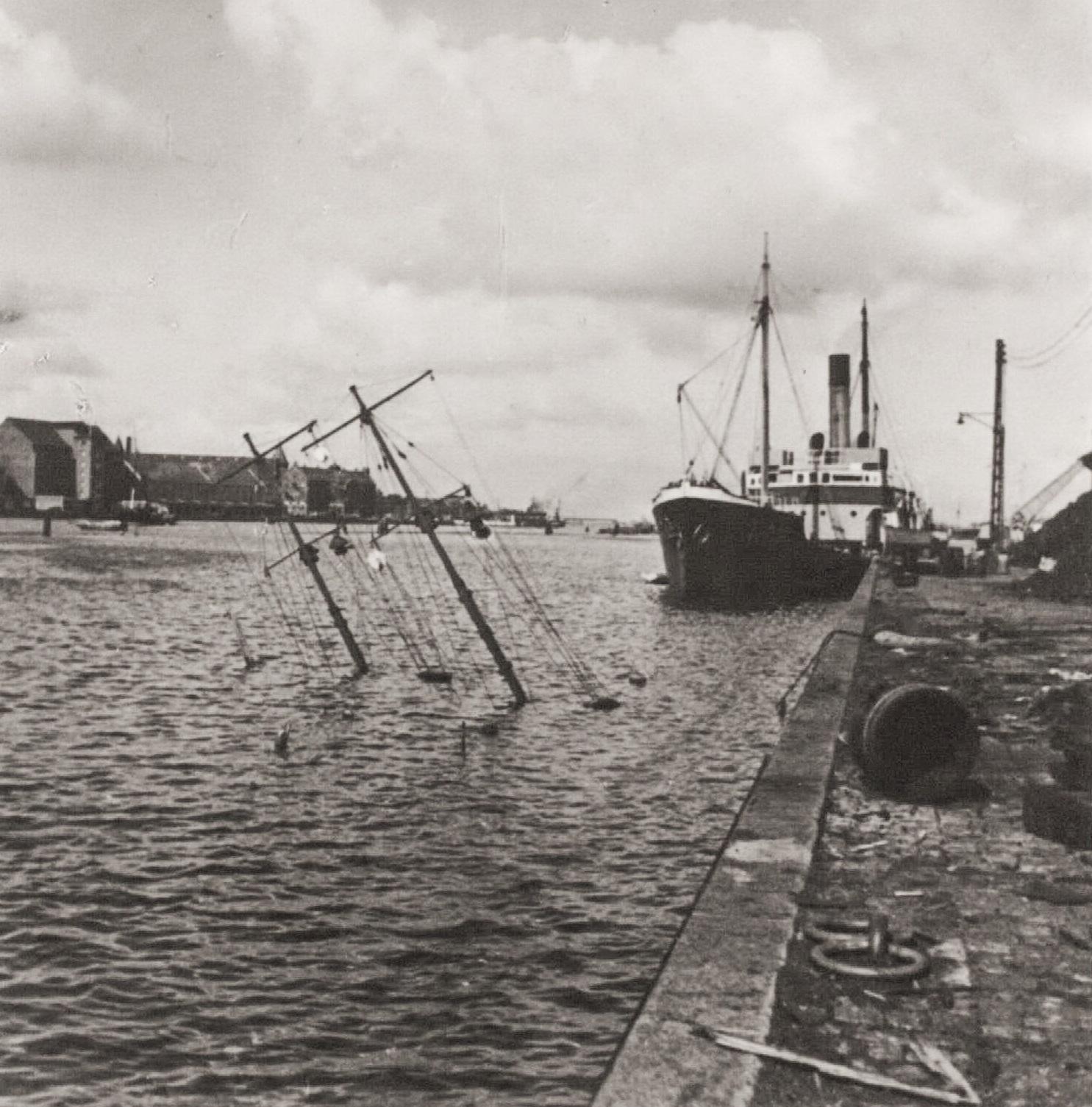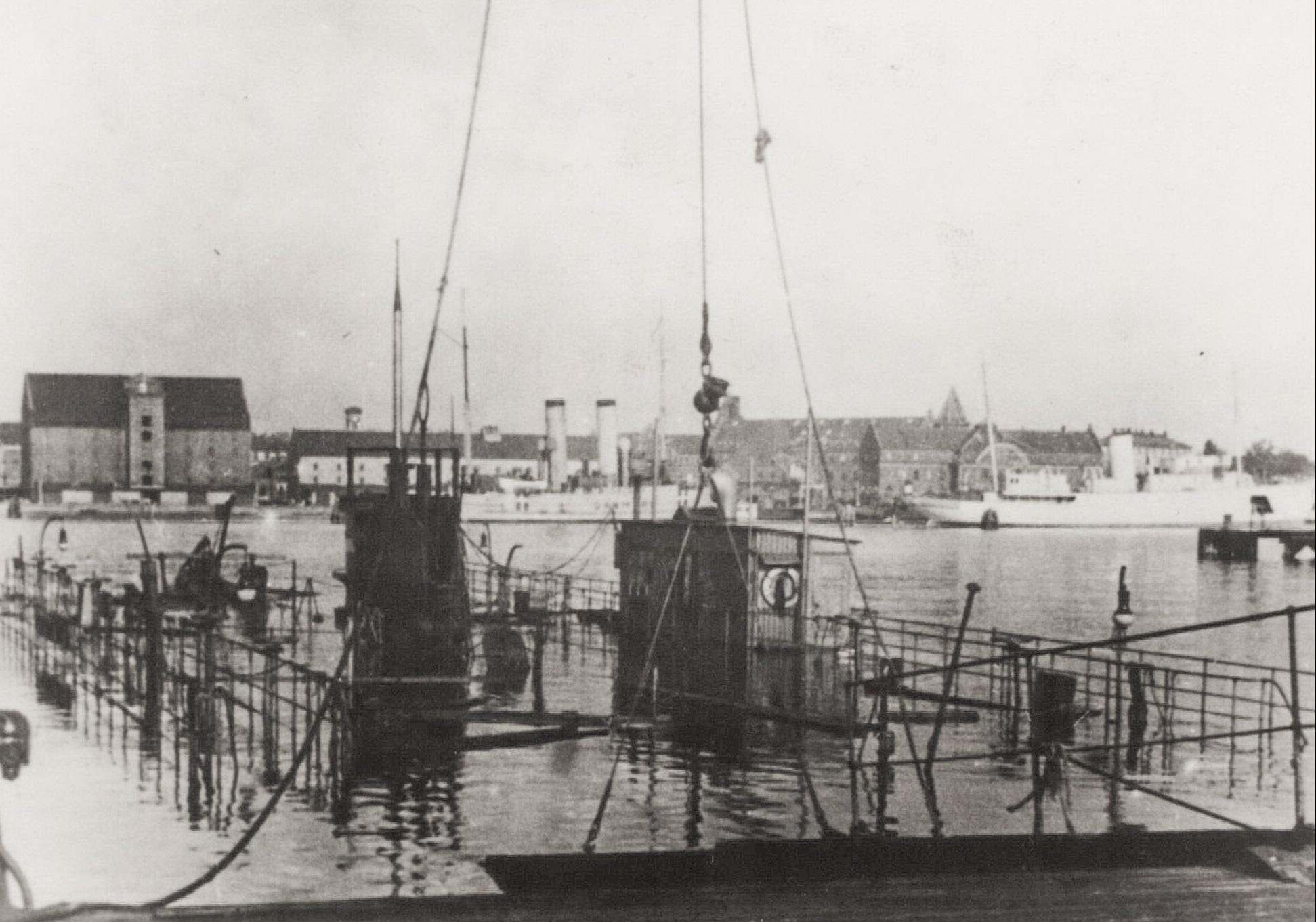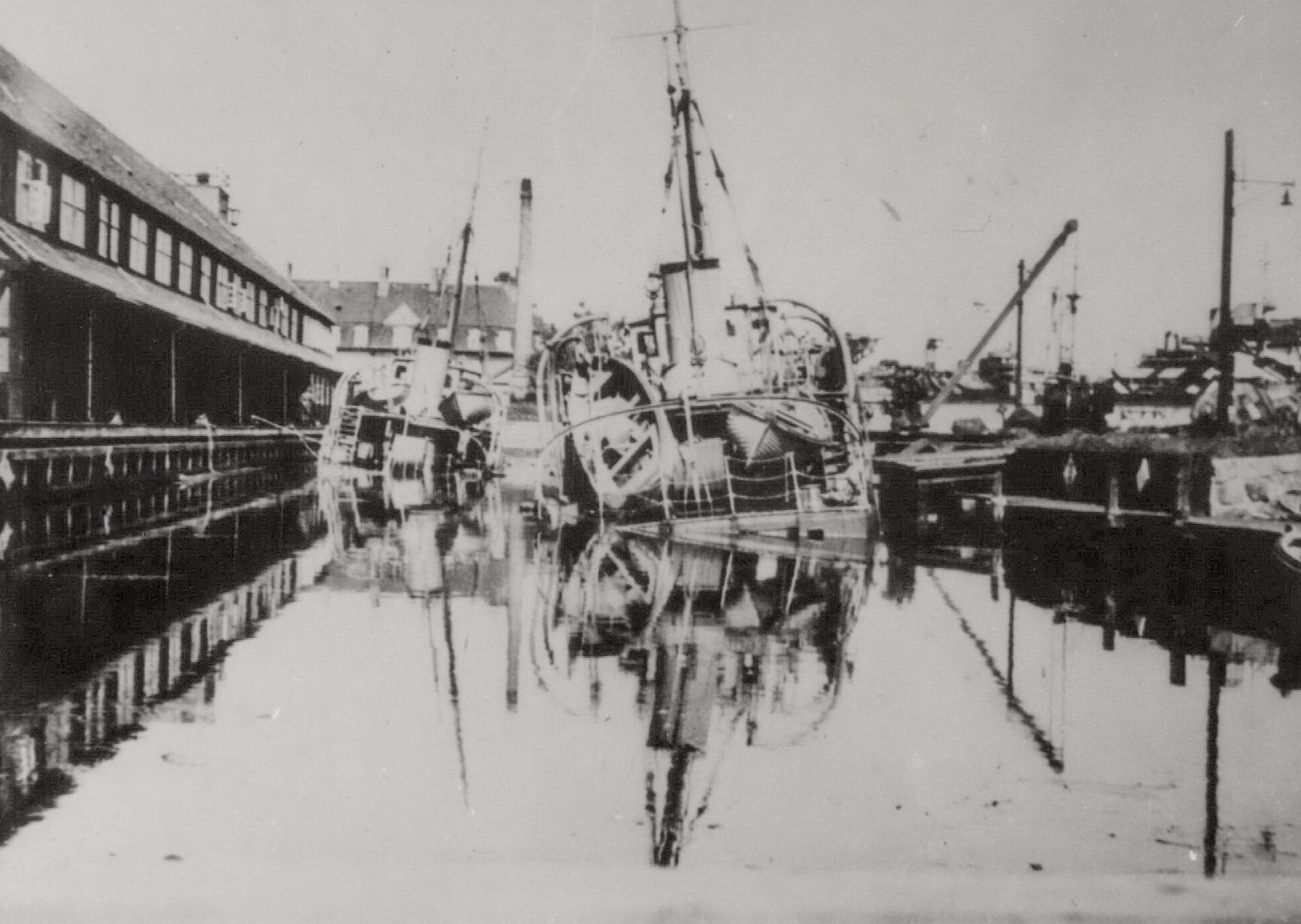The August Uprising 1943
Experience the dramatic and rebellious atmosphere in Denmark in August 1943, which had a decisive influence on the rest of the occupation period.
From Germany's occupation of Denmark on 9 April 1940 until August 1943, the occupying power and the Danish government had pursued a policy of cooperation. But in the summer of 1943, the mood of the Danish population turned to opposition to the Germans, and rebellions broke out in many parts of the country. However, the rebellion ended abruptly when the German occupying power demanded that the Danish government crack down heavily on the resistance, which caused the Danish government to withdraw from the cooperation policy. The August uprising is also known today as "the break with the occupying power".
The cooperation policy
When Germany occupied Denmark on 9 April 1940, the occupying power wanted to avoid creating conflict with the Danish population. At the same time, the Danish government and Parliament wanted the country to get through the war gently. Therefore, the cooperation policy between Germany and Denmark arose, which meant that the Danish government could continue to govern the country to a certain extent, as long as they adapted to the Germans' wishes. The cooperation policy meant that Denmark was one of the countries in Europe that was least affected by the war.
Germany in decline
Several events both inside and outside the Danish borders led to the government, Parliament and the king having to withdraw at the end of August 1943.
In the summer of 1943, Germany suffered a series of serious setbacks on the battlefields of the Eastern Front and the Mediterranean, and on 24 July, 1943, Hitler's ally, the Italian dictator Mussolini, was deposed because the fortunes of war had turned for him as well. The decline of Germany affected the mood in Denmark, and a perception spread throughout the country that the end of the war was near. However, this would later prove to be a mistaken view.
A rebellion begins
An optimistic and rebellious mood arose in the population at the same time. The rebellion began in Odense, where workers at the Odense Steel Shipyard went on strike on 30 July because the occupying power had deployed armed sabotage guards. The riots and sabotage then spread to the rest of the country. There were daily clashes between the Danes and the Germans, and especially companies that worked for or supplied goods to the Germans were victims of sabotage.
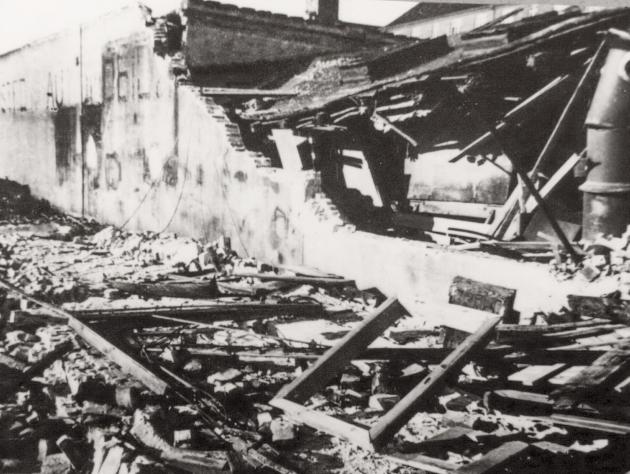
Photo: Det Kgl. Bibliotek
To put an end to the Danes' rebellion and sabotage, Hitler ordered Parliament to declare a state of emergency. This meant that strikes and assemblies were to be banned, a curfew was to be introduced at night and sabotage was to be punished with the death penalty. With pressure from both the Danish population and the occupying power, the Danish government ended up refusing to obey the order, and this led to the resignation of the government, Parliament and the king on 29 August 1943.
Operation Safari and the sinking of the fleet
Early in the morning of 29 August, 1943, the Danish defence was disarmed during battles by the German armed forces. The Germans had dubbed the operation Operation Safari, and it ended up costing the lives of several Danish and German soldiers.
There was no question of a united Danish resistance. However, as far as possible they wanted to prevent the Germans from getting their hands on military equipment - especially the ships of the Danish navy. The Germans had guns along Langelinie, which made it impossible for the Danish ships to sail away from Naval Station Holmen. Therefore, orders were given to sink the fleet's ships, and 30 vessels were sunk and destroyed. In addition, 13 ships managed to sail to neutral Sweden.
In other places, they also succeeded in destroying weapons and other military equipment, while others were given to the resistance movement. The Danes' resistance to the occupying power and the sinking of the fleet became a significant symbol that the Danes were on the side of the allies.
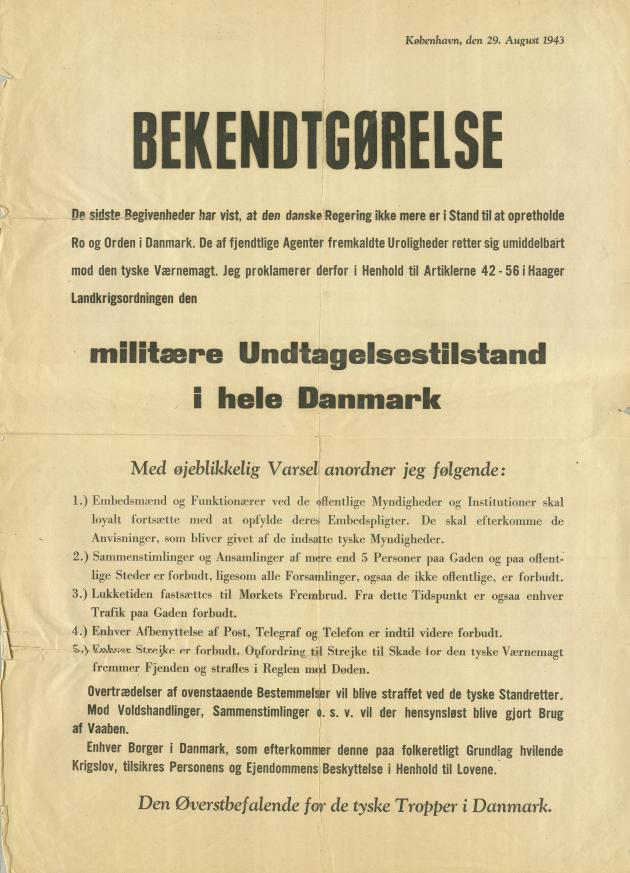
Photo: Det Kgl. Bibliotek
The end of the August uprising
With the now weakened Danish sovereignty, the occupying power could declare a state of military emergency in Denmark. Strikes and assemblies were banned, sabotage would lead to the death penalty and night curfews were introduced. This brought the August uprising to an abrupt end, and 250 Danes were arrested. The state of emergency did not last long and after 6 weeks it was lifted. However, the Danish government, Parliament and the king did not return. The government of the country fell into the hands of the German plenipotentiary, Werner Best, and it was left to the department heads of the Danish ministries to work according to his orders until the liberation almost two years later, on 5 May 1945.
Defeat or victory?
Among the Danish population, mixed attitudes arose as to whether the August uprising and the results of the uprising were good or bad for Denmark. The rebellion had led to a major defeat for the cooperation policy between Denmark and Germany, which until then had ensured that the country had come gently through the war, and people feared what consequences the new order would have for the country and the population. In contrast, the rebellion was hailed by the resistance movement as a great victory that placed Denmark on the side of the Allies in the world war.
See more pictures from the August uprising 1943
In the library's digital collections you can travel back to the August uprising in 1943 in the many photos that were taken during the riots.
